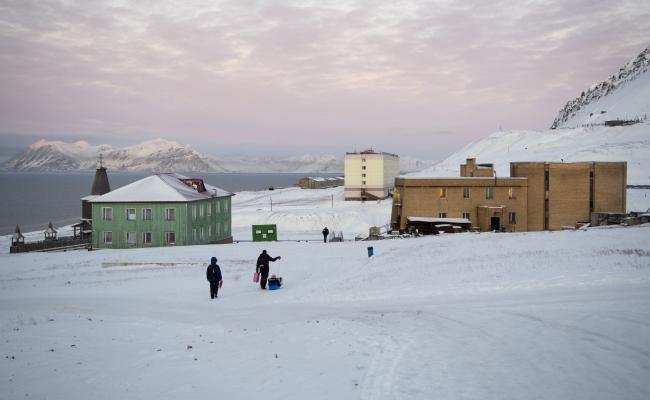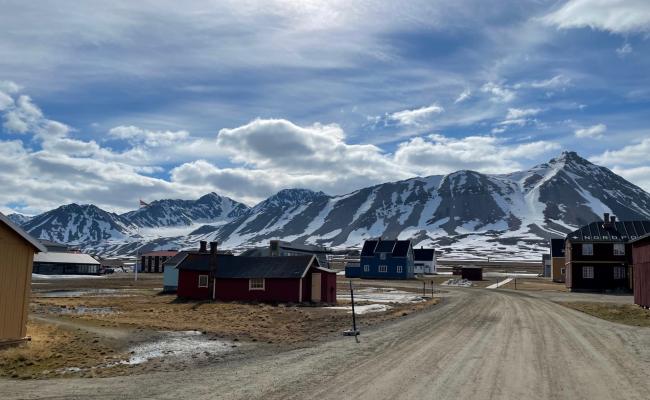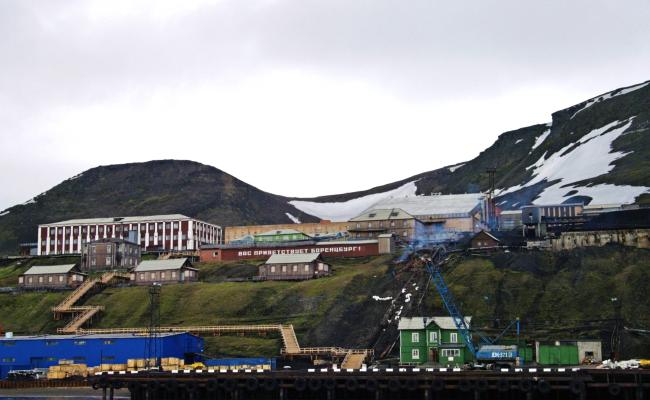Svalbard in the National Budget: Electricity Support, Education and Research
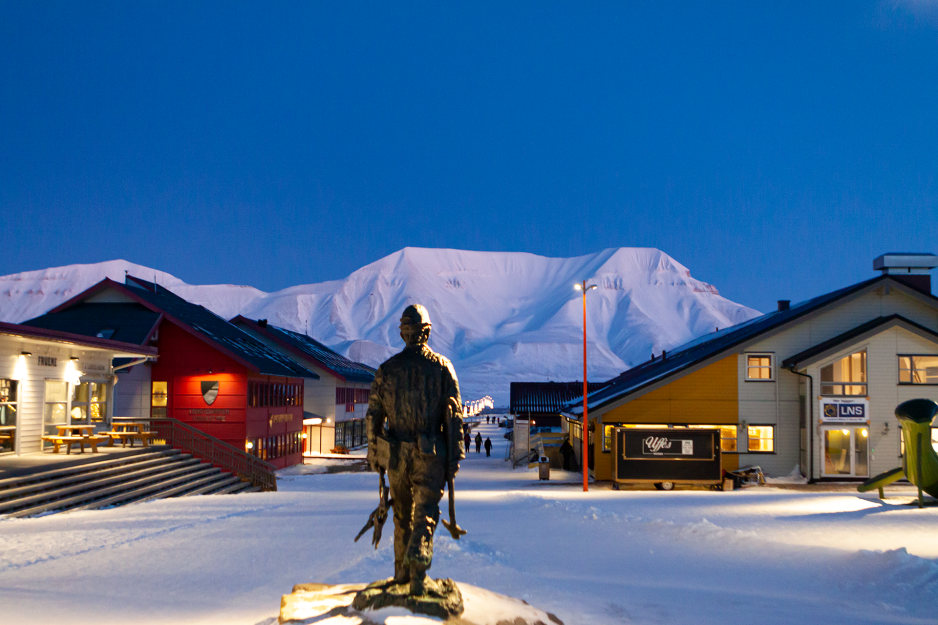
On Monday, the Norwegian government presented its proposal for the national budget for 2025. It included new funds to contribute to reduced electricity prices in Longyearbyen, Svalbard. (Photo: Ingrid Ballari)
The Norwegian government wants to give Longyearbyen NOK 100 million in electricity support in 2025. This will probably not be enough to prevent increased energy fees, says the community council chair. However, the proposed NOK 184 million for the University Center in Svalbard will contribute to the resumption of normal activity.
Longyearbyen faces a demanding energy transition after the coal power plant was shut down in the fall of 2023. The transition to diesel-based power production, while awaiting the phase-in of renewable energy, has led to significantly heightened energy prices.
In the proposal for the 2025 national budget, the Norwegian government wants to allocate NOK 100 million to reduce energy prices for households and businesses in Longyearbyen. The money will be allocated as an earmarked grant to the Longyearbyen Community Council, which sets the concrete energy prices.
The measure follows grants for the same purpose in the new balance for the 2023 national budget (NOK 50 million) and in the revised national budget for 2024 (NOK 125 million). The latter budget also included NOK 42 million to strengthen the security of supply in Longyearbyen.
"In May, the government presented a new Svalbard white paper, where we announced that we would strengthen the Norwegian family community in Longyearbyen and strengthen state control with important infrastructure, among other things. Security of supply and stable energy prices are important parts of this," says Minister of Justice and Public Security Emilie Mehl (Center).
Still expects increased energy fees
Community Council Chair Terje Aunevik (Liberals) says to Svalbardposten that the government's proposed allocation will hardly be sufficient.

Terje Aunevik (Liberal), Chair of Longyearbyen Community Council. (Photo: the Liberal Party)
"We have to carefully read the documents from the government and go more into the figures, but if we consider NOK 100 million in electricity support, then we have to expect that the energy fees will increase. Put simply, it could increase somewhere between 20 and 30 percent," Aunevik tells the newspaper and continues:
"We should be happy that electricity support is coming, but the reality is that the need is similar to last year. NOK 125 million for operations and NOK 64 million for investments. The investments that Svalbard Energi AS is planning so far are to improve the security of supply."
The energy agency in Longyearbyen (Energiverket) was changed into Svalbard Energi AS on January 1st, 2023. The company is wholly owned by the Longyearbyen Community Council.
A clarification of responsibilities
Today, the Longyearbyen Community Council owns and operates the energy supply in Longyearbyen, and is responsible for the energy transition.
In the 2024 Svalbard white paper, the government states that it intends for the state to take greater responsibility for the energy supply in Longyearbyen, for example, through the state-owned company Store Norske, and that the responsibility for the energy supply will be clarified as soon as possible.
Store Norske has been commissioned to carry out a concept study of various options for future energy supply in Longyearbyen, as well as a condition assessment of existing infrastructure with capital needs.
Water supply and the port
· The Longyearbyen Community Council has a statutory responsibility for infrastructure in Longyearbyen when the responsibility has not been assigned to the state or others. This applies i.a. to the energy supply, water supply, and the port. In the Svalbard white paper, the government proposes to review responsibility for critical infrastructure in the city.
· The Longyearbyen Community Council is currently investigating a future backup solution for the city's water supply. In the revised national budget for 2024, the community council was allocated NOK 3 million as state co-financing for a preliminary project to establish a reserve source for drinking water.
· The port infrastructure capacity in Longyearbyen is limited. According to the National Transport Plan (NTP) 2025-2026, the Norwegian Coastal Administration will survey needs and make a new assessment of the design and schedule for a possible new port project in the city under state auspices. According to the Svalbard white paper, the Coastal Administration may propose concrete measures for the next white paper on NTP to the parliament.
· The port in Longyearbyen is next in the government's ongoing survey of national security at Norwegian ports, NRK reported in early October.
More for UNIS
The government also proposes NOK 184,1 million for the University Centre in Svalbard (UNIS) under the Ministry of Education and Research's budget for 2025.
The grant aims to promote high-quality education and research with the starting point being that Svalbard is located in a high-Arctic area.
The proposal entails an increase of NOK 15.7 million compared to the national budget for 2024 – and NOK 5.7 million compared to the revised national budget in June. UNIS then received an additional grant of NOK 10 million in light of the increased costs of managing higher education and research on Svalbard.
In 2023, UNIS had to reduce its number of full-time student admissions by 20.
With the government's proposal for 2025, UNIS will be able to resume normal operations, says Director Jørn Moen to Svalbardposten.
"These funds are extremely important to us. The fact that we had to shut down educational activities meant that research production also stagnated. We have research-based education, which is why we are now very happy that we will return to the level of 220 full-time students," Moen tells the newspaper.
The government will also give NOK 1.1 million to the Arctic Safety Center at UNIS, which works to increase the business community's competence around sustainable and safe activity in the Arctic.
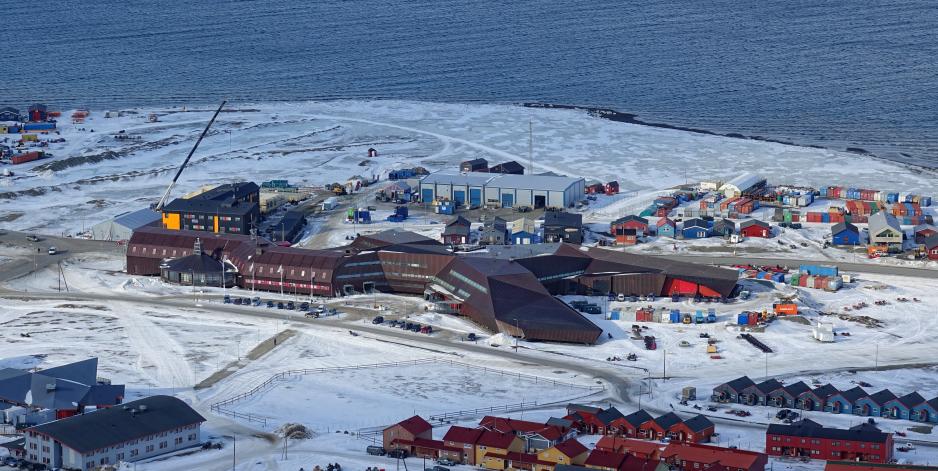
The University Center in Svalbard is located in the Svalbard Research Park in Longyearbyen, which opened in 2006. The research park also houses i.a. the Svalbard Museum, the Norwegian Polar Institute's office in Longyearbyen, and the Research Council's Svalbard office. (Photo: Bjørn Christian Tørrissen)
In the Svalbard white paper, the government announces that it will consider various measures to increase the proportion of Norwegian students at UNIS. In 2023, 28 percent of the students at the university center were Norwegian citizens.
Control of goods and people
In May 2022, Svalbard became a separate customs area, and the Norwegian Customs was established with a separate unit to control the transport of goods to and from Svalbard.
This unit conducts physical control of goods shipments both in Longyearbyen and in the Russian settlement of Barentsburg.
The government proposes to allocate a total of NOK 32.5 million for goods movement control on Svalbard in 2025 under the Ministry of Finance's budget.
This is NOK 12 million less than the government proposed in the national budget for 2024.
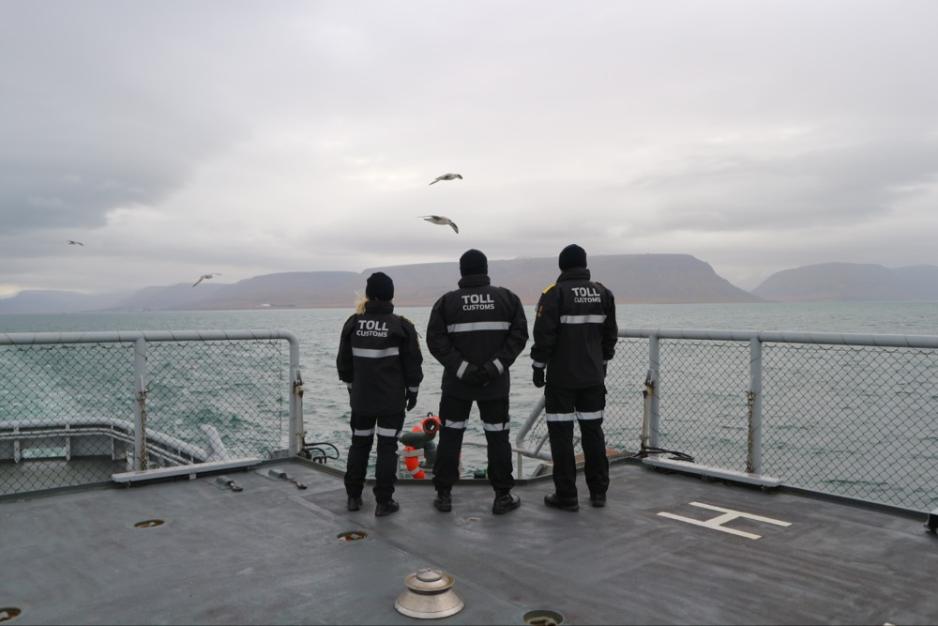
Norwegian Customs officials in Svalbard. They control the movement of goods to prevent cross-border crime, ensure that Norway fulfills international obligations, and prevent Svalbard from being used to circumvent the sanctions and export control regulations. (Photo: Norwegian Customs/TV 2)
The government also introduced the control of travelers to and from Svalbard in May 2022. The Governor of Svalbard carries out the person control at Svalbard Airport in temporary premises, in the field, and onboard vessels.
In the Svalbard white paper, it is informedthat the Governor has been strengthened with a police attorney and has received increased funding due to the introduction of person control.
In the Svalbard budget for 2025, the government proposes to give the Governor NOK 95.5 million for operations – an increase of 6 percent compared to the balanced national budget for 2024.
The government also proposes allocating NOK 266.2 million for the Governor's transport service, an increase of 2.3 percent from the balanced national budget for 2024.
"The government will prioritize following up on person control and goods movement control on Svalbard in 2025, and work further with rules on safety in the field," it writes in the Svalbard budget.
· "Expansion of person control and and control of the movement of goods from the current level at Svalbard Airport requires expansion of the areas at the airport", writes the government in the Svalbard white paper.
· The airport, owned by the Norwegian state through the company Avinor, also has limited air traffic capacity, but the government does not express plans to expand it. "The government sees it as important that air traffic that supports the needs of the local population and the needs of local business is given priority," it also states in the Svalbard white paper.
Norwegian research leadership
In the Svalbard white paper, the government announced that it would strengthen Norwegian research management in Svalbard by establishing a Svalbard research office. This office will be run by the Research Council of Norway and the Norwegian Polar Institute.
"While this will further contribute to good assistance for actors interested in researching on Svalbard, it will also strengthen national control of research activity," the white paper states.
The Norwegian Polar Institute manages the Ny-Ålesund research station, which facilitates international scientific research collaboration. Every year, research institutions from around 20 countries carry out projects there.
Approximately NOK 149.6 million of the proposed 2025 grant to the Institute in the Ministry of Climate and Environment's budget is related to Svalbard, an increase of NOK 5.6 million from 2024.
In addition, the institute receives funds from the Svalbard budget, which is proposed to be NOK 4.25 million in 2025.
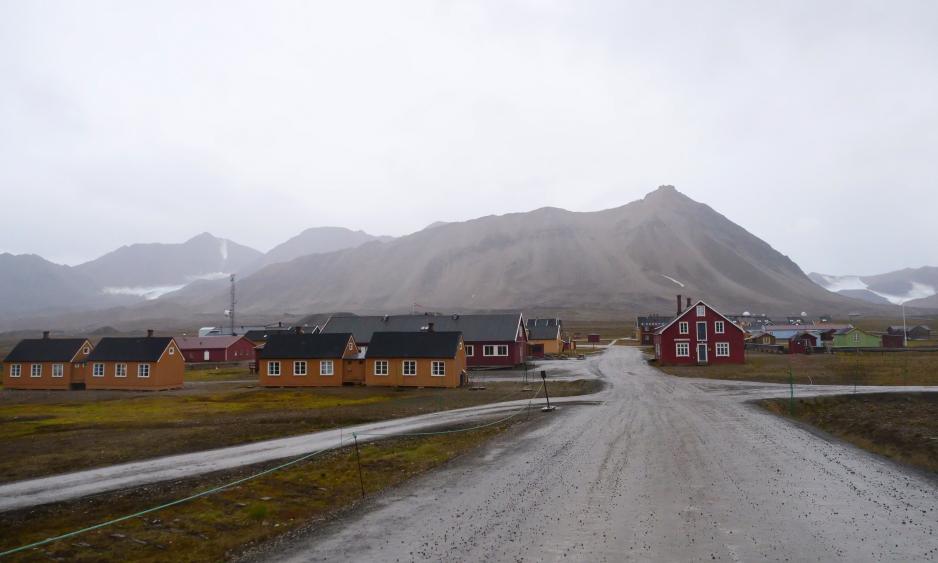
In Ny-Ålesund, located on the south side of Kongsfjorden in Svalbard, the world's northernmost year-round research station is operated. (Photo: Katinka Vaag Prestøy/the Norwegian Ministry of Climate and Environment)
Kings Bay
Kings Bay AS is a wholly owned state company facilitating research in Ny-Ålesund in close dialogue with the Norwegian Polar Institute.
The company owns the land, infrastructure, and most of the buildings in Ny-Ålesund and rents out 14 buildings to research institutions from various nations.
The government proposes to allocate NOK 82.2 million to Kings Bay under the Ministry of Climate and Environment's budget for 2025, an increase of 3 million from 2024.
The grant will cover investments, any operating deficits, and necessary expenses for administering Bjørnøen AS. This company owns all the land and some cultural-historical buildings in Bjørnøya (Bear Island), the southernmost part of the Svalbard archipelago.
The government is also proposing grants for 2025 for the Svalbard Environmental Protection Fund, meteorological services, mapping and sea surveying, the cultural sector, and business initiatives. See the full overview of the Svalbard budget here.
The national budget and the Svalbard budget
• The Ministry of Justice and Public Security presents the Svalbard budget as a separate budget proposal at the same time as the proposal for the national budget. Funds are transferred to Svalbard across both budgets.
• The government proposes increasing the Svalbard budget from NOK 611.9 million in 2024 to NOK 697.3 million in 2025. This is an increase of NOK 85.4 million (14%).
• In the national budget for 2025, the government proposes to allocate a net NOK 1,185.9 million for Svalbard purposes – compared with NOK 1,368.6 in 2024. This is a reduction of NOK 182.7 million.
• The Svalbard budget primarily finances the state administration of Svalbard and includes allocations to the Longyearbyen Community Council. It also provides an overview of the government's initiatives and priorities in Svalbard, as well as an annual summary of developments on the archipelago.



